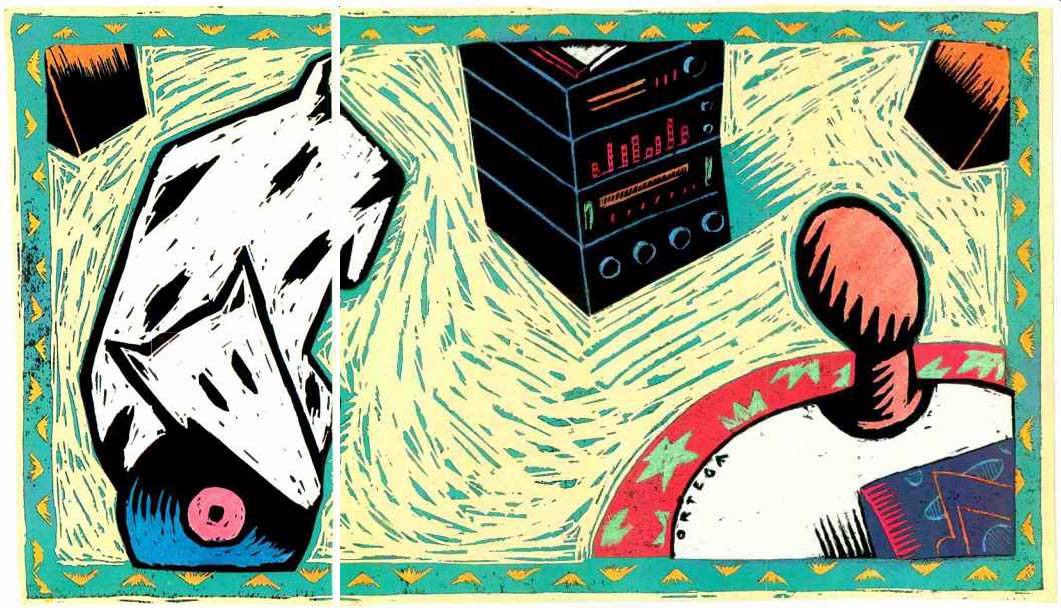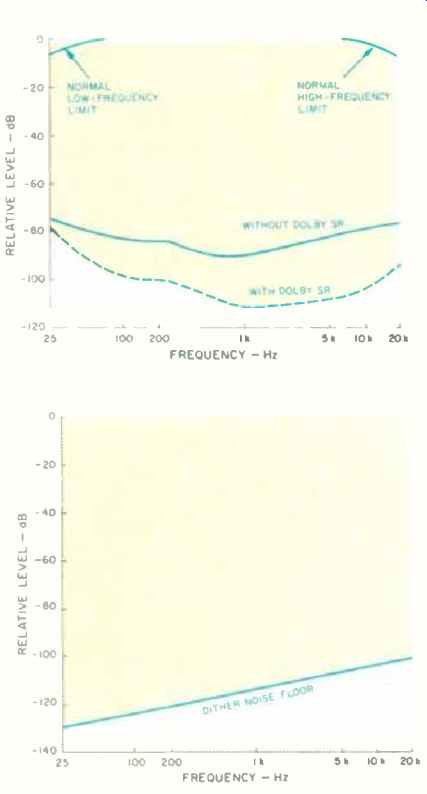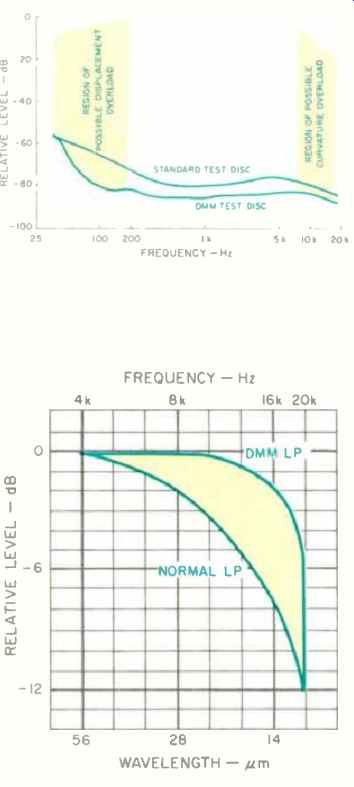
by JOHN EARGLE
From its introduction in 1957 until 1983, the vinyl LP was the major medium for stereo sound in the home. It was in 1983 that the Philips cassette eclipsed the LP in unit sales.
You may recall that the cassette was introduced around 1966, and at that time was of little more than dictating-machine quality. Through a series of developments in tape technology, electronics design, and noise reduction, the cassette emerged as a remarkable medium. During the 1970s, it effectively knocked open-reel tape out of the consumer marketplace.
As a home recording medium, the cassette eventually reached quality levels high enough to satisfy even fussy users. And as a carrier of recorded program material, it survived the rigors of high-speed duplication. In time, the base of cassette players in the home, and especially in the automobile, increased to the point where tape decks rivaled turntables, and the cassette became the dominant medium for recorded music. The important thing to note is that it took some 17 years for this to happen.
The CD was introduced in 1982, and its phenomenal growth is something we have all witnessed in recent years.
In 1982, no one could have foreseen that it would eclipse the LP in dollar sales in 1987 and overtake it in unit sales in 1988. The CD has accomplished in five years what it took 17 years for the cassette to do.
The big question is this: Is the LP truly doomed? Or are we looking at a realignment of marketplace tastes and priorities, in which the LP will settle into a new but lower volume plateau? There are many commercial factors to be considered here, and I will try to sort them out.
First, we must realize that the record industry thrives as much on new technology as it does on new artists and new music. The record industry reached a peak in 1978, and the slump that followed was devastating. The last five years have seen new growth in the industry, and it has been largely fueled by enthusiasm for the CD. Last year, in fact, was the banner year in the history of the record business.
CD mania has carried through into consumer electronics and record retailing as well, the high prices of discs notwithstanding. In an effort to make room for new CD releases, many large retail chains have cut back on LP bin space, and many record companies have adopted a CD-only policy for classical releases. Record retailers want to maximize the yield of every square foot of store space, and record manufacturers are always looking for ways to delete slow-moving product and reduce their catalog size.
A related factor, at least in the United States, is the tooling down of LP manufacturing. In the last two decades, RCA and Capitol/EMI have between them closed six LP pressing plants, leaving the business largely to CBS, WEA (Warner/Elektra/Atlantic), and a group of relatively small, independent pressing houses. Ultimately, it may be the independents who keep the LP art going.
It would appear that economic factors are hastening the demise of the LP when, in fact, there may be a market which is not quite ready to die. Given a stronger dollar, there would be plenty of high-quality imported LP product to fill some of this need. Many American record manufacturers, however, feel that between cassettes and CDs, they are pretty well covering the important retail bases.
If there is to be an ongoing market for the LP, it will be that which is fueled largely by high-end audiophile tastes To many, this must seem paradoxical in an age of rapidly improving digital technology, but it is the case nonetheless. A trip through any high-end hi show will reveal a large number of ex pensive turntable/cartridge combinations, most reproducing superb sound (The same, I might add, holds for CD demonstrations which use later generation players and well-recorded program material.) In time, many of the LP's proponents may adopt the CD, but for the present, they are deeply committed to the older medium.
What, then, are the characteristics of the LP which make it such a favorite? And how good can the LP really be? In order to answer these questions, let's take a short look at the history of the medium.
Alan Blumlein cut the first 45/45 stereo disc in 1931, but it couldn't be played at that time. Many in the industry felt it would never be practical, and it was more or less hidden in EMI's archives for many years.

It wasn't until 1947 that the mono LP became a reality, and with it came a new approach to phonograph cartridge engineering. This sparked a reexamination of stereo disc problems, and by the mid-1950s, stereo had become a fact in the laboratory. By 1957, there was product on the market. It didn't always sound good, though, and there remained much work to be done.
One by one, the significant problems were solved.

(top) Fig. 1--Signal space available for standard analog recording on 15-ips
tape, with and without Dolby SR. The top solid curve shows the normal limits
in analog tape systems due to equalization requirements at low frequencies
and the risk of tape saturation at high frequencies. Dolby SR effectively
compensates for these problems, creating overall flat power-bandwidth capability
at full signal level. Upper frequency boundaries, with or without SR, are
not absolute limits. Low-level noise readings were made in third-octave
bands; thus, the data indicates the effective dynamic range of the system.
(above) Fig. 2--Signal space for a 16-bit digital system operating with
a 44.1-kHz sampling rate. Once converted to the digital domain, these characteristics
can be carried through to the end product-in this case, the CD itself. A
dithered noise floor has been added to the digital input signal to linearize
the system's low-level performance.
Low-level noise readings were made in third-octave bands.
In the early 1960s, the discrepancy between vertical cutting and playback angles was identified and the adjustment made. About that same time, the problems of tracing distortion were addressed by "pre-distorting" the groove electronically. Later, this technique was abandoned in favor of elliptical playback stylus design, which further alleviated high-frequency loss at inner grooves. All along, there were improvements in vinyl formulations for pressing, resulting in lower noise. The American industry, however, was never able to maintain the generally high levels in pressing quality routinely met by Japanese, German, and Dutch manufacturers.
By the late 1960s, direct-to-disc recording had established new limits for the stereo LP by circumventing the tape recorder altogether and simplifying the overall recording chain. Then came the golden era of $18 LPs.
Throughout the 1970s, many small, audiophile-oriented companies regularly turned out superior disc product, with most of the pressing done in Japan.
Denon and JVC releases were imported from Japan, and domestic labels such as Telarc and Delos were putting out superior product, via Soundstream digital sources, long before the majors realized that a market for a "super record" existed. Mobile Fidelity took the boldest stand of all in leasing master tapes from the majors, transferring them to disc at half speed with loving care, and making much better product than the larger record companies knew was possible.
But back at the studio and the laboratory, there were still many non-linearities in the overall disc transfer process remaining to be solved. Some of these could be dealt with and compensated for by creative "adjustment" of transfer processes and even of studio techniques themselves. (See my discussion of this in "Do CDs Sound Different?" in the November 1987 issue.) Digital recorders had come into the studio during the mid-1970s. While solving the knotty problems of alignment and response stability, these machines did not provide the natural cushion at high recording levels which the analog machines did. It was at this point that many audiophiles developed their first doubts about digital recording technology in general.
When the earliest CDs hit the market, these doubts were reinforced. Many of the new discs did sound strident. It has only been in recent years that the problems with digital have been solved, again through adjustments in recording philosophy as well as improvements in recording and playback processes.
How good can the stereo LP be, given today's state of the art? It can be a superlative medium. An all-analog recording chain of the highest quality would certainly begin in the studio with Dolby Spectral Recording and analog tape running at 15 ips. Dolby SR is that company's latest generation in complementary pre- and post-processing for noise and distortion reduction at the initial recording stage, and its overall dynamic range capability is shown in Fig. 1. It effectively adds about 25 dB of dynamic range to the normal performance of a tape recording channel.
(The zero reference level in Fig. 1 is established as the normal maximum operating level the engineer wishes to reach. Normally, with current tape formulations, this is set at around 200 nWb/m. Any modulation over this reference level will fall into the analog cushion range. It is best to avoid this, but there would be no catastrophe if occasional forays into this area were unavoidable.)
Figure 2 shows the signal space of a 16-bit digital system operating at a sampling frequency of 44.1 kHz. The upper boundary is firmly established, due to the hard clipping of the system once full modulation is reached. Also, the upper frequency limit of the system is firmly established at 20 kHz, due to the filter demands of anti-aliasing.
A comparison of Figs. 1 and 2 shows that, at some higher frequencies, the signal space of the Dolby SR-equipped tape recorder actually exceeds that of the digital system. Furthermore, the upper frequency limit of the Dolby SR analog system is not limited to 20 kHz. Actually, Dolby SR could be used with 30-ips tape recorders, with overall system response well beyond 20 kHz.
Analog tape recording, then, given the dynamic code/decode action of Dolby SR, is effectively a match for current digital standards and does not take a back seat at all in any listening comparisons. However, subsequent analog transfers will show some degree of degradation, while subsequent transfers of digital recordings can be virtual clones of the original.
Moving on to the stereo LP itself, the quality improvements inherent in Direct Metal Mastering are substantial. One of the best papers covering DMM was published in Audio (April 1987). In that article, authors B. V. Pisha and George Alexandrovich covered the technology in detail. Figures 3 and 4 represent measurements presented in this article and data regarding the performance of disc systems at high frequencies. Note that DMM provides a lower noise floor for the system as well as extended high-frequency response.
DMM accomplishes these improvements through use of a precision cutting tool which has no burnishing facets, cutting directly into a copper surface instead of the conventional lacquer-coated disc. Lacquer is a complex organic mixture and introduces its own distortion and noise into the cutting process. By comparison, the copper is dimensionally stable and produces a more accurate signal, virtually free of bothersome groove echo.
Further, the number of replicated generations between the master and the finished product can be reduced, with consequent improvement in noise.

Fig. 3--Signal space for DMM and standard stereo LPs. The upper limit shown
is determined by a maximum recorded stylus velocity of 10 cm/S, as modified
by RIAA pre-emphasis. Low-level noise readings were made in third-octave
bands. (After Pisha and Alexandrovich.) (above) Fig. 4--Reduction in high-frequency
losses at moderate playback levels when DMM is used. The losses are minimized
due to the absence of burnishing facets on the DMM cutting stylus. Curves
shown are from playback of actual pressings. (From Pisha and Alexandrovich.)
While the superb low-noise characteristics of Dolby SR are not carried through into the finished disc product, the resulting noise floor is quite acceptably low. Partisans of extended frequency response will be quick to point out that the response of the finished discs, at outer and middle diameters, can easily exceed 20 kHz.
Time will tell if the improvements in analog processes, both tape and disc, will be able to forestall the demise of the LP and give it a reprieve. I suspect they will. Like so many other fans of the CD, I have a vast collection of LPs going back to the beginning of that art.
Many items in my collection will never see the light of day on CD, so I do a good bit of listening to both formats. I am comfortable with both mediums.
However, given the choice of buying Sheffield's Moscow Sessions on CD (made from digital masters) or LP (made from analog masters), I opted for the CDs. But I might, at least some of the time, be fooled in a blind NB comparison!
=============
Dolby Spectral Recording
Most readers of Audio probably have some familiarity with the basics of noise reduction, if for no other reason than that they have had these functions on their cassette machines for years. The heart of most noise-reduction systems is signal compression during recording and complementary signal expansion during playback. Complementary equalization is also an important part of the noise-reduction process, as is the selection of proper attack- and release-time characteristics for the various gain manipulations.
Dolby Laboratories introduced its A-type noise-reduction system for professional use in the late 1960s, with the consumer Band C-type systems following later. Nothing is free, and the price paid for the dynamic range extension of the earlier noise-reduction systems was occasional audibility of the compression/expansion actions when those actions were "unmasked" by the specific nature of the input signal. Dolby Laboratories analyzed the audibility problems of the earlier systems and, in 1986, introduced yet another generation, called Spectral Recording, which embodies many of the advantages of the earlier A-type system plus the sliding-band techniques introduced in the Band C-type systems.
The action of Dolby SR is basically to analyze the spectral composition of the input signal on a continuous basis and to define a protective dynamic "gain envelope" for the signal, such that no part of it will drop below the audible noise threshold of the recording medium. On playback, the inverse action is carried out, and the original signal dynamics are restored. The overall improvement in dynamic range over the non-Dolby SR recording channel is about 24 dB, from 2 to 8 kHz.
At the lowest recording levels, the SR system is in its full boost mode in recording and full attenuation mode in playback. What this means is that the inherent tape noise floor of the recorder is lowered by as much as 25 dB in the range where the ear is most sensitive to noise. The long solid curve in Fig. 1 shows the normal limit for tape without Dolby SR, while the dashed curve shows the effect of Dolby SR. The spectral characteristics have been plotted based on third-octave noise measurements and, thus, are some 14 to 15 dB lower than wideband noise measurements. To the extent that we can hear pure tones in the midband which are some 12 to 15 dB below a wideband noise level, the total spread between upper and lower bounds in Fig. 1 gives an accurate indication of the subjective dynamic range capability of the recording system. The gradually fading boundaries indicate that the limits are not firmly fixed and that recorded modulation may exceed them slightly.
In Fig. 1, spectral data on the analog recording system is from Camras [1, page 351], modified by recent tape improvements which I have described [3, page 305}. The Dolby SR data is from Dolby [2]. As with all Dolby NR systems, a full-level signal goes through the system almost unimpeded, with little action by the signal-analysis and gain-change circuitry. It is only when the signal drops to lower levels that the circuit complexities come into play.
With good analog tape recording channels already pushing a dynamic range of 68 to 70 dB, the additional 25 dB afforded by Dolby SR gets it into the range of 90 to 95 dB, which is comparable to digital recorders.
Some engineers say it is even better.
Is there a price for all this improvement? Not as far as I can tell. I auditioned a pair of Dolby SR retrofit cards with my Dolby A units, and I could not make the action audible--no matter how hard I tried.
--J.E.
References
1. Camras, M., Magnetic Recording Handbook, Van Nostrand Reinhold, New York, 1988.
2. Dolby, R., "The Spectral Recording Process," Journal of the Audio Engineering Society, Vol. 35, No. 3, March 1987.
3. Eargle, J., Handbook of Recording Engineering, Van Nostrand Reinhold, New York, 1986.
=============
(adapted from Audio magazine, Aug. 1989)
= = = =